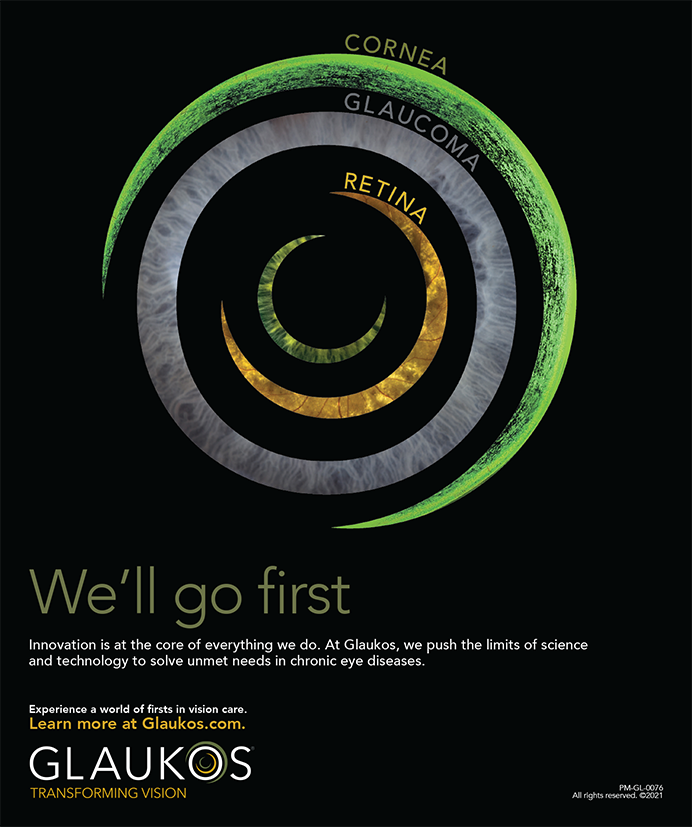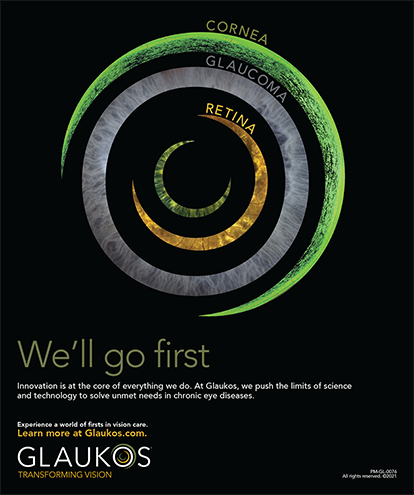| Presbyopia-correcting IOLs and their incorporation into practice are hot topics at every ophthalmic meeting. If we already feel pressure to produce a flawless result with these lenses, how much more nerve-wracking is their implantation in healthy eyes without cataracts? Four highly experienced surgeons share their comments. |
| —William J. Fishkind, MD, Section Editor |
Y. RALPH CHU, MD
Three things help me to optimize the results of refractive lens exchange. First, because many of these patients desire presbyopia-correcting IOLs, I carefully create a well-centered, circular, continuous capsulorhexis of between 4.5 and 5.0 mm in diameter. Close attention is critical with new-technology IOLs to ensure their adequate centration and proper positioning within the bag.
Second, I routinely perform bimanual I/A to ensure thorough cortical cleanup. I also take extra time to polish not only the posterior capsule but also the anterior capsular rim for 360° to minimize capsular fibrosis and posterior capsular opacification. For presbyopia-correcting lenses, minor fibrosis and clouding of the capsule can reduce patients' reading vision early in the postoperative period.
Finally, I am careful to close the incision properly, and I ensure that the postoperative change in IOP is minimal. I have a low threshold for placing a suture in these eyes. Although this step seems counterintuitive, I have found that the visual recovery is more stable and smoother in eyes that have tight wounds and steady IOPs postoperatively.
FRANK A. BUCCI, Jr, MD
The tolerance for intraoperative complications is obviously extremely low among patients paying nearly $4,000 per eye for refractive lens exchange. Because these individuals are frequently significantly hyperopic and have crowded anterior chambers, I often administer intravenous mannitol (12.5 g) at least 45 minutes prior to surgery. I also increase the minimum Honan balloon time from 10 to at least 20 minutes.
During refractive lens exchange versus standard cataract surgery, I usually make a slightly larger capsulorhexis to facilitate the prolapse of the nucleus anterior to the iris plane at the time of hydrodissection. This measure keeps me as far from the posterior capsule as possible when using high-vacuum Venturi phacoemulsification to remove the nucleus. The larger capsulorhexis also makes removing the cortex easier. If cortical material is present underneath the temporal clear corneal wound, I will more readily switch to using a manual Simcoe cannula through the sideport incision, which I place 3 hours clockwise from the clear corneal wound. I find this technique to be safe for removing cortex when it does not come out easily with usual I/A.
In addition to my routine endophthalmitis prophylaxis, each patient undergoing refractive lens exchange receives topical Zymar (Allergan, Inc., Irvine, CA) every minute for 5 minutes postoperatively before being discharged. During the past 10 years, I have performed approximately 1,700 refractive lens exchanges, which have resulted in one vitrectomy and no cases of endophthalmitis.
J. E. "JAY" McDONALD II, MD
I concentrate on the incision, the capsulorhexis, and the nucleus' removal. Recognizing that these eyes have lower scleral rigidity than those of typical cataract surgery patients is key. I prefer a slightly longer incisional "sleeve" for refractive lens exchange to minimize incisional leakage, even with more angular movement of the phaco tip. I use a trapezoid diamond and angle the keratome toward the center of the cornea as the blade moves forward. Not overinflating the anterior chamber with viscoelastic improves my control of the incision as I advance the keratome. A younger capsule coupled with lower scleral rigidity means that I must exert more force and torque to initiate the capsulorhexis and to maintain the angular momentum and subsequent tear. Sometimes, adding more viscoelastic after the initial incision is completed helps.
I delineate the nucleus from the cortex for as much of the 360° as possible. During hydrodissection, I perform sweeping movements with my cannula as I simultaneously inject balanced salt solution. My goal is to tilt the nucleus upward so that phacoemulsification takes place around the iris plane and the instrumentation does not contact the posterior capsule. I use a divide-and-spin technique. I make the nucleus a split spinning tire by first bisecting it with a simple groove before elevating it.
I prefer a 45° tip, because it cuts with very little phaco power and I can always see it. Additionally, a simple rotation of the "suction surface" of the large, beveled tip improves my access to the nucleus and epinucleus by 20 to 30.
Overall, I am much more cautious in refractive lens exchange than standard cataract surgery. The techniques I described have alleviated a lot of my performance anxiety as well as the surgical hiccups that can lessen my and my patients' rewards.
D. MICHAEL COLVARD, MD
Although I am not a fan of supracapsular phacoemulsification in general, I find that the technique is ideal for refractive lens exchange. It is perhaps the safest way to prevent capsular injury during the lens' extraction, and soft, "clear" lenses can be aspirated safely in the anterior chamber without ultrasonic energy.
My specific approach is simple and requires virtually no learning curve. I make two sideport incisions and a standard 4.5- to 5.0-mm capsulorhexis. I then place the hydrodissection cannula through the primary incision and under the capsular margin at approximately 3 o'clock (Figure 1A); one should imagine the primary incision at the 6-o'clock position. With the cannula, I depress the margin of the primary incision slightly to decompress the anterior chamber and direct the flow of irrigation slightly anteriorly in the capsular bag. This action creates a cleavage wave between the peripheral cortex and the posterior capsule and causes the lens to rise forward. Between 6 and 12 o'clock, the lens softly "tiddlywinks" out of the capsular bag and into the anterior chamber. The trick, then, is to keep the nucleus from popping back into the capsular bag during I/A. I avoid that problem by injecting a dispersive ophthalmic viscosurgical device (OVD) on both sides of the subluxated edge of the lens. I use the OVD to rotate and hold the lens in a vertical position (Figure 1B and C). Then, without ultrasonic energy, the lens is gently aspirated as it rotates like a wheel into the phaco tip (Figure 1D).
Section Editor William J. Fishkind, MD, is Co-Director of Fishkind and Bakewell Eye Care and Surgery Center in Tucson, Arizona, and Clinical Professor of Ophthalmology at the University of Utah in Salt Lake City. He is a consultant to Advanced Medical Optics, Inc. Dr. Fishkind may be reached at (520) 293-6740; wfishkind@earthlink.net.
Frank A. Bucci, Jr, MD, is Medical Director of Bucci Laser Vision Institute in Wilkes-Barre, Pennsylvania. He is a consultant to Advanced Medical Optics, Inc. Dr. Bucci may be reached at (570) 825-5949; buccivision@aol.com.
Y. Ralph Chu, MD, is Medical Director of Chu Vision Institute in Edina, Minnesota. He is a consultant to Advanced Medical Optics, Inc., and Allergan, Inc. Dr. Chu may be reached at (952) 835-0965; yrchu@chuvision.com.
D. Michael Colvard, MD, is Assistant Clinical Professor at the University of Southern California School of Medicine in Los Angeles, and he is Director of the Colvard Eye Center in Encino, California. He acknowledged no financial interest in the product or company mentioned herein. Dr. Colvard may be reached at (818) 906-2929; eyecolvard@earthlink.net.
J. E. "Jay" McDonald II, MD, is Medical Director of McDonald Eye Associates in Fayetteville, Arkansas. He acknowledged no financial interest in the product or company mentioned herein. Dr. McDonald may be reached at (479) 521-2555; mcdonaldje@mcdonaldeye.com.


